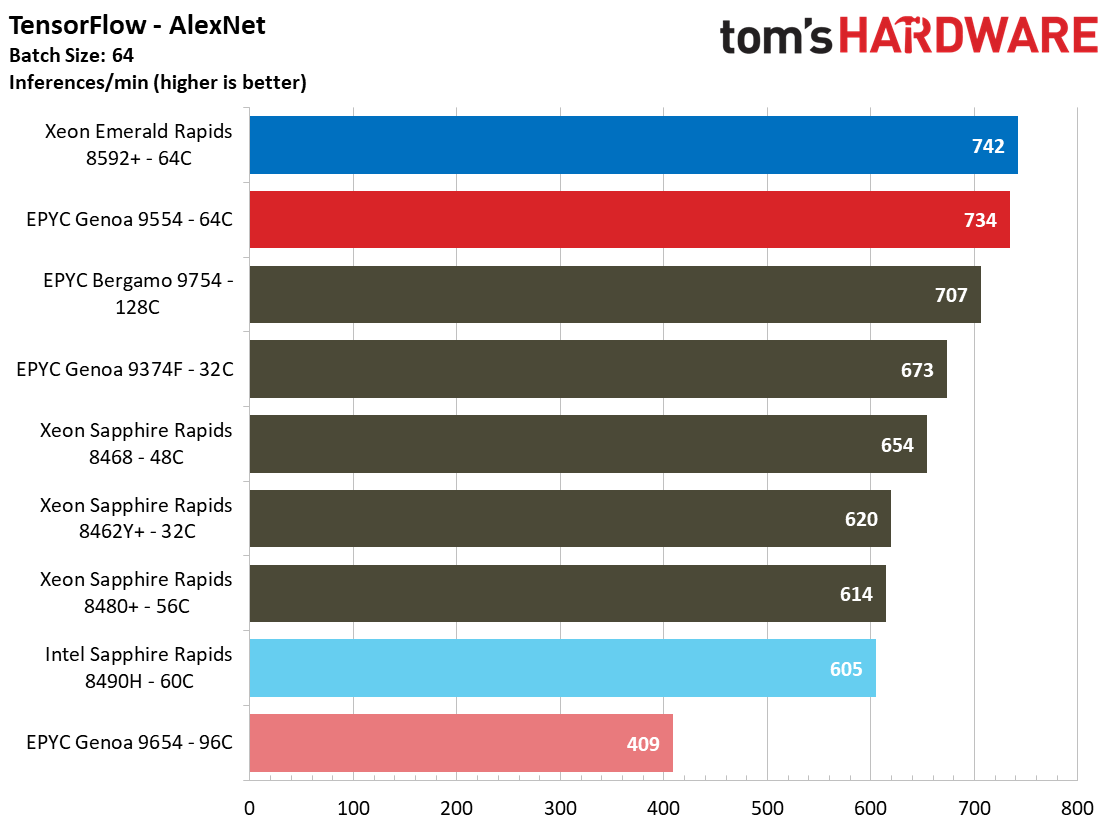We put Intel’s fifth-gen Emerald Rapids Xeon Platinum 8592+ through the benchmark paces against AMD's EPYC Genoa to see which server chips come out the winner.
Intel 'Emerald Rapids' 5th-Gen Xeon Platinum 8592+ Review: 64 Cores, Tripled L3 Cache and Faster Memory Deliver Impressive AI Performance : Read more
Intel 'Emerald Rapids' 5th-Gen Xeon Platinum 8592+ Review: 64 Cores, Tripled L3 Cache and Faster Memory Deliver Impressive AI Performance : Read more



